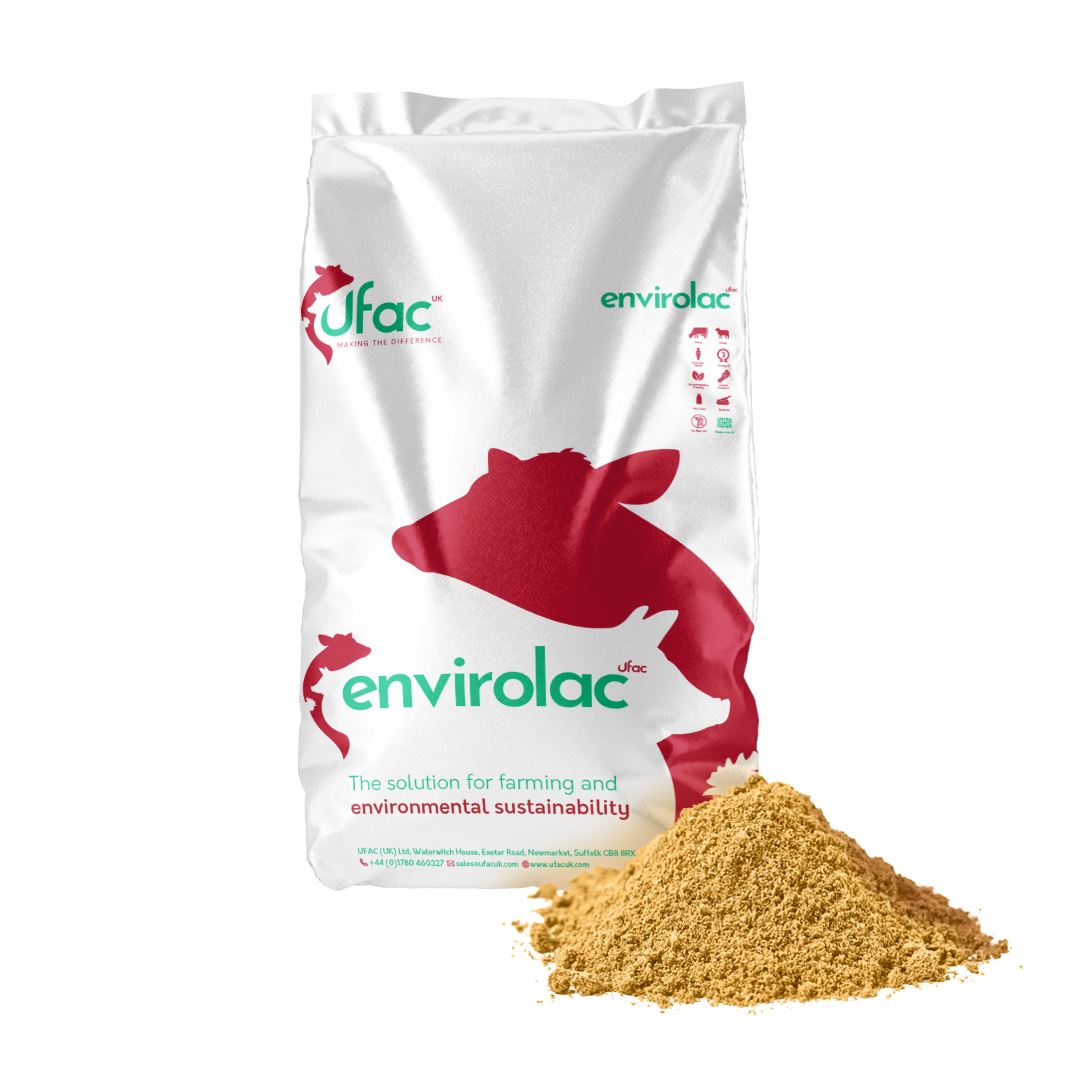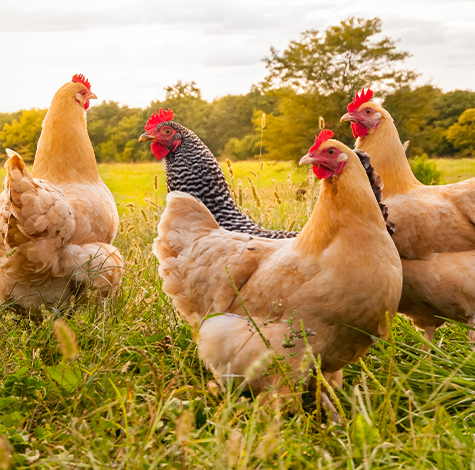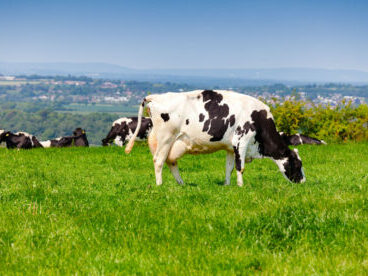A palm-free diet sees yield improvements and components maintained for Arla regenerative pilot farm
Reducing the farm carbon footprint has been an important aim for former RABDF Gold Cup Winner Neil Baker for over a decade, with a focus on home-grown forages a key component to helping him achieve that.
The opportunity to consider an alternative to palm-derived fats to support dietary energy density seemed a logical next step in his ‘circular farming’ operations, but it was important there was no compromise on yield or components.

“Herd health and performance is key for our contracts. We have always had cows with quite high component levels from our cheese-making days,” says Mr Baker.
As such, his Arla Tesco contract has been a good fit, with the aim of driving the fats and proteins as high as possible. But it was also the connection with the end customer that also appealed.
“From our days of making cheese dating back to the 1960s, we have always been close to our customers, including both retailers and consumers,” he says.
When the farm stopped making cheese in 2012, Mr Baker was keen to work with a milk buyer that mirrored this approach, hence why he wanted to join a co-operative.
“This gives me a feel for what the consumer wants, and animal welfare has always been top of that list. But more and more, we are seeing concerns over the environment as another top priority,” he says.
Mr Baker was invited to become one of Arla’s pilot regenerative farmers across Europe, starting a little over a year ago, and he says this has also exposed him to different approaches and different ways of thinking.
“We have to accept that dairy farming is vulnerable to environmental concerns in the eyes of the consumer. This is why we have been doing carbon foot-printing for 10 years. The fact that we have been ranking well shows we are on the right track,” he says.
Nevertheless, a balance is needed to meet contract requirements and maintain the health and performance of the herd, alongside reducing environmental impacts.
Home-grown forage
Part of Mr Baker’s success in reducing the carbon footprint is down to a strong commitment to home-grown forage. “Feed is a big part of the business, from both a financial and carbon cost,” says Mr Baker.
This is why more land was taken on, now with a total of over 3000 acres of owned, rented and contract land in Haselbury Plucknett in Somerset, to increase home-grown forages.
“We have approximately 60% maize forage and 40% grass silage and grow most of our own wheat as well, as we try to push to around 75% home-grown feeds for the dairy herd,” he says.
By focusing on cultivations, timings and varieties, the operation is now able to grow more and better forages.
“We are also more resilient, aiming to have a minimum of half a year’s forage in the clamp ahead, whereas previously we might have only carried forage for a month ahead. It helps us become more resilient if seasons are too wet or too dry,” he says.
“The general farming system is now driving the cows. The cows get to eat what the farm grows, whereas previously they would eat what we had to buy in, from advice from the nutritionist.”
Palm-free alternatives
Part of that ration has always involved feeding C16 and palm-derived fats, so when Mr Baker’s herd manager made him aware of positive research findings into envirolac, a new palm-free energy supplement, it seemed to tick the boxes in terms of further enhancing environmental credentials.
As dairy herd manager for 18 months, Diana Guitane has focused on improving fertility and yield performance, and while interested in the environmental credentials of the new palm-free supplement, retained caution over its impact on performance.
“Herd health and performance is key for our contracts,” she says. “As we are supplying on an Arla Tesco contract, where payments are based on solids, butterfat and proteins are important.”
Ms Guitane has monthly meetings with nutritionists based on how the cows are performing, and part of that analysis determines when or if extra energy supplies are required to balance the diet.
“I have known Mark Townsend at UFAC-UK for some time, and he has been helpful in advising on different fat products. When he told me about the research undertaken at Nottingham University with envirolac, it was of interest,” she says.
The research, undertaken by Professor Phil Garnsworthy, demonstrated the environmental impact of the supplement to be far lower than that of palm-based fats.
“The supplement is home-produced, using no palm products whatsoever. We blend soft, very highly digestible oils onto dry carriers such as wheat-feed and maize corn cob, and then blend that together,” explains Mr Townsend.
“Professor Garnsworthy’s trials at the University of Nottingham show the carbon footprint of envirolac was 64% lower than that of calcium soap. The 11% reduction in feed carbon footprint, per unit of energy-corrected milk, will also result in a net reduction in the total carbon footprint of milk production,” he adds.
While the trial had initially hoped for equal performance, replacing palm on a like-for-like basis, it actually resulted in higher performance. Milk yield went up, and with the higher fat and protein content, the palm-free product produced 1.6kg extra energy-corrected milk per day.
This was enough evidence for Neil and Diana to trial the product, placing an initial 10-tonne order in consultation with the nutritionist, including it as part of the TMR across all milking groups.
The ration is made up of maize and grass silage, at a proportion of 2-to-1, with 30kg maize and 15-17 kilos grass, fresh-weight. This is balanced with rapemeal as the main source of protein, with an inclusion rate of 250g of envirolac added to balance the energy.
Since feeding the product in December 2022, Ms Guitane says there has been no drop in components, and over the last 12 months, the yield has remained consistent.
The herd is currently averaging 36 litres per cow per day, at 4.2% butterfats and holding 3.5% protein, even in the high heat levels experienced in the summer.
“We feel it is performing and supporting the energy requirements of the cows, helping to balance the ration,” she says. “Ultimately, we are aiming for 45 litres per cow across the whole herd, including heifers, with this diet. Depending on the DMI, we will adjust and manage what they eat, but everything will be presented with the same ration.
“The fact that we can also help further reduce our carbon footprint in our aim to achieve this, is a real benefit,” concludes Ms Guitane.


 Back to News
Back to News 



